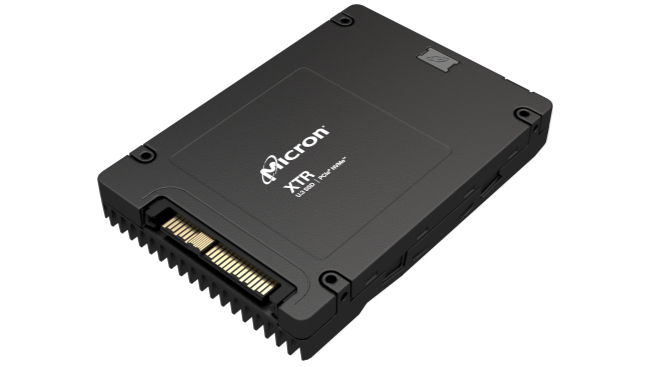Micron unveils SCM-lite SSD - A third of the performance, a fifth of the cost
Micron’s XTR competes with the now-defunct Intel Optane and provides with an upgrade path

Micron unveiled two SSDs yesterday: the first was the Micron 6500 ION and the second is the XTR, which complements the former and aims at providing, in Micron’s words, an affordable alternative to “expensive” storage class memory (SCM) SSD. Micron is clearly aiming at its former partner, Intel, and its now defunct Optane technology which used 3D X-Point which was developed in partnership with Micron.
Key to Micron’s aspirations are two features: the XTR is 80% cheaper than Intel’s Optane at similar capacities and delivers up to 35% of the random DWPD (drive written per day) numbers. That’s a staggering 35 random drives written per day (up to 67TB written per day for the 1.92TB model).
Intel’s Optane DC P5800X (1.6TB) currently sells for around $3000 and has a 100 DWPD endurance or around 160TB). That would put the price of the 1.92TB XTR SSD at $600 which makes it a rather tasty product; a smaller 0.96TB SKU is also available.
The two drives are also optimized for write performance and endurance rather than low latency which was one of the reasons why Optane did so well. Micron quotes read/write latency at 60/15ms respectively, significantly higher than its Intel rival.
It’s all about the pairing
Micron suggests pairing the XTR with its own just-released 6500 ION. The rationale behind this is that the XTR, while not significantly faster than the 6500 ION has a much higher endurance (by an order of magnitude) as it is a single-level cell SSD rather than a triple-level cell one. As such, it can be used as a smaller cache drive, which makes it ideal for write buffering, logging, journaling, OLTP, and other write-intensive workloads.
Intel announced that it was getting out of the SCM business in July 2022 so there’s a gap in the SCM market that many will be looking to fill. Intel has created demand for a product that many will be looking to fill will SCM-class product, either in the form of super fast SLC-based SSD or DRAM/NAND hybrids.
As Justin Emerson, principal technology evangelist at Pure Storage, puts it, perhaps the future of SCM is less of a category and more of a spectrum, with many different options not being placed in a particular stratum but rather a continuum. For Micron, one of the two backers of 3D XPoint, the future is clearly SLC-based.
Sign up to the TechRadar Pro newsletter to get all the top news, opinion, features and guidance your business needs to succeed!

Désiré has been musing and writing about technology during a career spanning four decades. He dabbled in website builders and web hosting when DHTML and frames were in vogue and started narrating about the impact of technology on society just before the start of the Y2K hysteria at the turn of the last millennium.